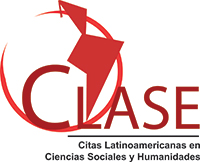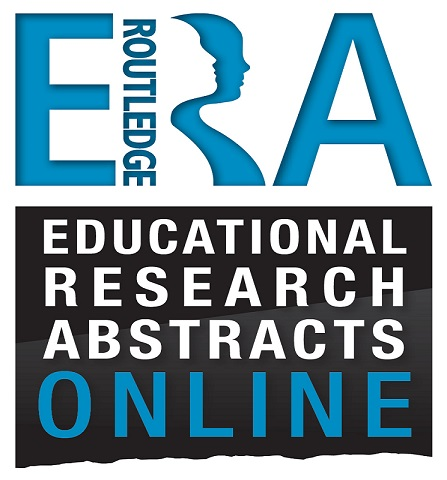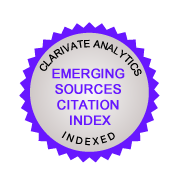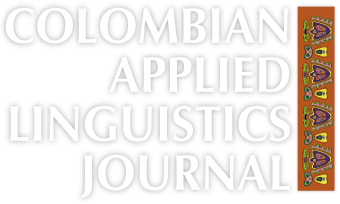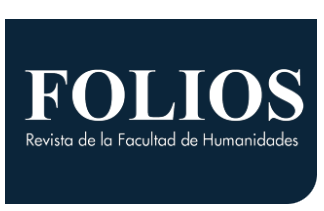Teaching EFL Academic Writing in Colombia: Reflections in Contrastive Rhetoric
La enseñanza de escritura académica en Colombia: reflexiones en retórica contrastiva
Keywords:
Contrastive rhetoric, EFL composition, pre-service English teacher education, teaching English as a second language (en)Enseñanza del inglés como segundo idioma, formación inicial de docentes de inglés, redacción en inglés como lengua extranjera, retórica contrastiva (es)
This essay relates observations to the reasons that advanced students of English as a foreign language in Colombia struggle with English composition. It identifies some cultural, academic, and disciplinary influences that may obfuscate their assimilation of the conventions of written English. It concludes by proposing that the teaching of context awareness would help said students in their writing of academic texts in English.
Este ensayo relata observaciones acerca de las causas por las cuales los estudiantes de nivel avanzado de inglés como lengua extranjera tienen dificultades al redactar en dicha lengua. El ensayo señala algunas causas culturales, académicas y otras relacionadas con el campo específico de estudio, que podrían obstaculizar la asimilación de las normas del inglés escrito. Finalmente, propone que la enseñanza del reconocimiento de contexto les ayudaría a estos estudiantes a redactar textos académicos en inglés.
Teaching EFL Academic Writing in Colombia: Reflections in Contrastive Rhetoric
La enseñanza de escritura académica en Colombia: reflexiones en retórica contrastiva
Juan D. Gómez
Universidad de Antioquia, Colombia
jdgomez7@gmail.com
This article was received on July 15, 2010, and accepted on January 26, 2011.
This essay relates observations to the reasons that advanced students of English as a foreign language in Colombia struggle with English composition. It identifies some cultural, academic, and disciplinary influences that may obfuscate their assimilation of the conventions of written English. It concludes by proposing that the teaching of context awareness would help said students in their writing of academic texts in English.
Key words: Contrastive rhetoric, EFL composition, pre-service English teacher education, teaching English as a second language.
Este ensayo relata observaciones acerca de las causas por las cuales los estudiantes de nivel avanzado de inglés como lengua extranjera tienen dificultades al redactar en dicha lengua. El ensayo señala algunas causas culturales, académicas y otras relacionadas con el campo específico de estudio, que podrían obstaculizar la asimilación de las normas del inglés escrito. Finalmente, propone que la enseñanza del reconocimiento de contexto les ayudaría a estos estudiantes a redactar textos académicos en inglés.
Palabras clave: enseñanza del inglés como segundo idioma, formación inicial de docentes de inglés, redacción en inglés como lengua extranjera, retórica contrastiva.
Introduction
I teach academic writing in Medellín, Colombia. My students are enrolled in an undergraduate degree program that expands and deepens their English proficiency (most have had basic English in high school) and prepares them to become teachers of English to elementary and high school students in their immediate environs. They are all three or four semesters away from graduating and for the most part have a level of proficiency in English that is equivalent to a B1 on the CEFR (Common European Framework of Reference for Languages) scale.
For over a decade, I have taught composition in state and community colleges in New York State. My students there were both native speakers of English and speakers of other languages. The obstacles that my current students face in Colombia differ both in kind and degree from those of my previous experience, and this essay is an attempt to identify some of the reasons why this is so.1 Having said this, my purpose is not to present Colombian culture as a monolithic entity but, rather, to encourage views that recognize the hybridity that is manifest in any culture and to highlight how multiple sources, including national culture, educational background, and disciplinary culture can converge to create unique obstacles for EFL students (Connor, 2002, p. 504).
What I focus on here are socially valued discourses and rhetorical norms that are recognized by most of the population and are of particular importance to those who see them as a prerequisite to a professional and upwardly mobile career. For this group of individuals, a group that includes my students and colleagues, there is social and ideological meaning built into the language and language use that I describe here; meaning that promises social, professional, and academic advantages if applied.2
I present here my observations as to the probable causes of these obstacles and how they converge to challenge Spanish speaking students who hope to become conversant in the logic of English composition or academic writing (by this last term I refer to a range that encompasses those essays that my students write for me, and those articles that my colleagues submit to journals such as this one).3 I conclude by proposing that making context awareness, an approach that emerges from the field of contrastive rhetoric, a part of teaching composition could begin to address the problems cited.
Literature Review
Efforts to identify the source of errors in composition writing have taken a variety of forms, but it has always been acknowledged that it is a difficult task to perform because errors often have multiple origins (Londoño, 2008, p. 138). Contrastive Rhetoric began as a tool toward this end in Robert Kaplan's essay "Cultural Thought Patterns in Inter-cultural Education" (1966). Kaplan looked at the compositions of English language students and evaluated them by focusing on the cultural contexts from which the students came and the rhetorical strategies employed.
Since then, contrastive rhetoric has bloomed from an area of study to an area proper of applied linguistics. In the 1980s, this approach gave rise to a trend in a comparative identification of rhetorical techniques (Purves, 1988). During the 90s the focus shifted to cross cultural studies that compared linguistic (unity, coherence, and organization) and rhetorical features (classical appeals to logos, pathos, and ethos). These studies also sought to identify a more definitive understanding of how a student's L1 knowledge influences the learning of English.
This focus on the contexts in which English and English writing are taught has been echoed by those who would like to see all formal learning from perspectives informed by the cultural constructs in which they take place (school, educational, local and national contexts (Holliday, 1994; 1996), (Hottel-Burkhart, 2000). More recently, Contrastive Rhetoric has turned its attention to the process and products of what is written for publication and professional purposes. Examples of this include Flowerdew (1999), Golebiowski (1998), and Moreno, (1998).
The Problem
At present, my students believe that in order to say, "I would like the students to use English more often during class" one should write that, "Promoting the oral acquisition in student performance follows closely with the planning objectives of the cooperating teacher."4 They believe that the second sentence is more correct, more acceptable, and that they should strive to compose sentences like this.
Kaplan identified the kind of indirect reasoning that generates sentences like this as common to romance languages, and this may be so, but this does not go far enough to explain why my students have a mistaken idea of how English works. For my students, not knowing how English works means that even with an adequate knowledge of English vocabulary and grammatical rules they remain unable to eliminate foreign features from their text, features at the discourse level that affect comprehension and assessment of the text (Mauranen, 1993, p. 158).
Because my students do not understand how English works and believe that they do, one must first begin by identifying the causes of the misunderstanding. This task must then be followed by correct models and finally reinforced by their application of what they have learned in the writing that they produce. This process would be longer and more arduous if they knew nothing of academic writing in English.
Their process of mis-education begins in high school where evidently little writing instruction is offered. An informal survey of forty two of my students, all from different high schools, to find out how many written assignments of three paragraphs or more (in Spanish or English) they had been asked to write in their last year of high school revealed that eighty nine percent of them were asked to write two essays or less and twenty two percent were not asked to write any essays at all. Four students reported to have written three or more essays, twelve said that they wrote two, fifteen were only asked to write one essay, and nine students were not asked to write any essays at all. This is, of course, not a formal survey, but serves as a convenient sample for present purposes.
Students who graduate high school and continue on to public universities face a similar situation. The public universities in Medellín do not have a general writing requirement for students. Individual academic departments are allowed to determine the importance of composition to their disciplines and design courses and requisites accordingly. Paradoxically there is, however, a state mandate for all students to demonstrate a basic level of English proficiency that is enforced in every department of public institutions of higher learning.5
From this data, one can conclude that for most students in public universities who attended public high schools (public and private academic tracks generally remain independent, a fact that reflects the rigid social structure of the country as a whole), the norms, preferences, and rules about written communication were not learned in the classroom but gleaned from their cultural and disciplinary context. In these they find models that give them a sense of the preferred structural points and rhetorical organization. And, the preferred form of communication that successful, educated, and influential persons use is a formal one. It follows, then, that given the importance that typical discourse and rhetorical practices have in any given culture, the beliefs that my students and colleagues hold about composition have been significantly shaped by these forces.
Formal communication in Colombia is in large part euphemistic and allusive. By formal I mean language that is stilted, ceremonious, concerned more with structure and sound than subject matter and that is conventional in that it seeks to be in accordance with local expectations. Formal communication, as I and my students experience it, is composed of baroque sentences with multiple sesquipedalian adjectives and adverbs. Its use is dictated as much by the social or professional standing of the speaker as it is by the situation in which he speaks so that informal settings are often the places for professionals to speak in a formal register.
My colleagues, whether emailing me, composing a report for peers or organizing a presentation for the general public adhere to the norms of formal communication. An email informing me of the cancellation of a weekly meeting usually begins with 'respected' or 'esteemed professor' and is followed by 'we should like to take this opportunity to inform you that ....' Presentations of the kind that occur in any faculty meeting are frequently prefaced by 'at this time we would like to make known the conclusions determined by the administrative body charged with ...'
Here is an example of the circularity and formality that my students are exposed to in their cultural context. When the president of my university in Medellín was recently interviewed in the university newspaper, he was asked: ¿Porqué hay consumo de drogas dentro de la universidad? (Why is there drug use inside the University?) to which he replied:
El consumo y el comercio ilícito de drogas no es exclusivo de las universidades, ni tampoco de los establecimientos educativos de secundaria donde también se presentan estos fenómenos. Ese es un problema nacional y mundial que afecta a la sociedad en general. Hoy en día el mismo gobierno colombiano reconoce la magnitud perniciosa de lo que se conoce como microtráfico y la proliferación de las llamadas ollas o casas de vicio. Colombia no sólo es un país productor y exportador de estupefacientes sino que pasó a ser consumidor. (Uribe, 2010)
Why is there drug use inside the University?
The use and sale of drugs are not unique to universities or to high schools, where these also occur. It is a global and national problem that affects society at large. Today the Colombian government has come to recognize the harmful effects of petty drug sales and the spread of drug houses. Colombia is a country that not only produces and exports drugs but has become one that also consumes them.6
His response is not an answer to the question, although it is presented as such. This is not to imply that verbosity is a trait of solely EFL students who speak Spanish. American undergrads (and the occasional faculty member) come to the university with similar ideas about the equivalency between volume and substance. But the case here seems aggravated by the syntactical allowances of Spanish, the hierarchical traditions in Spanish speaking countries, and the pressures on students to sound professional so as to have more and better opportunities of landing a job in a market where there are few.
As an American, I enjoy the ceremonial tone that all this gives to our everyday chores because it gives me, and what I do, a greater sense of importance than is warranted. As an outsider, I can see this manner of speaking for what it is, or rather, is not. It is not efficient and effective communication but substance subordinated to ritual, form, and custom. My students on the other hand see it, live it, and know it to be a means, the preferred means, by which educated people communicate. This misunderstanding is made manifest in their struggle to see written language as functional and pragmatic rather than aesthetic. So for the majority of them, brevity and precision are secondary to making their sentences resemble the tone and syntax of a papal bull.
The question then is what would make them so prone to imitation rather than assimilation?
Coincidentally, a formal style that is identified by its reflexivity and property (of language) to comment on itself, metalanguage without a referent, is particularly attractive to students who feel insecure or unsure about the validity of what they want to say. As a consequence, my students imitate and have been imitating for years. To ask them to do anything more as the EFL students that they are would be, I believe, unrealistic and counterproductive. They cannot assimilate because they lack what Widdowson calls 'contextual dependency'. The reality of language use depends on it being localized (Widdowson, 1998) and my students, because they are not in contact with a native English speaking community, lack this localization and have thus not internalized English as a semantic resource (712). Unlike ESL students for whom the need to master a second language is pressing, for my students it is a nine-to-five affair, if that much.
EFL students who study in their home countries have a choice. Their social relationships depend on their native language as well as their professional relationships. Without a real need there cannot be real learning. This is another challenge that should be acknowledged and is related to why outside influences are so quickly and thoroughly adopted; why many of my students learn to see English as a set of dance steps to memorize without ever learning to hear the beat. There are of course exceptional cases made so by talent and/or determination but these serve to prove the norm.
Returning to the aforementioned student sentence, we can see a second distinguishing feature, namely, that he was miming not just syntactical forms but lexical ones as well, both form and content, both of which were only marginally related to what he wished to convey.7 He subordinated his message and gave priority to a weak and lengthy sentence that conformed to the formal structure favored by his culture and chose terms that he had no doubt read and heard spoken by professionals in the field, terms like oral acquisition, planning activities, and student performance, terms which he then used indiscriminately.
The sentence thus becomes a typographical unit rather than a logical one (Kaplan, 1966, p. 11) where adherence to what is perceived as academic discourse actually "...masks a lack of genuine understanding" (Elbow, 1991, p. 137). All of this despite the fact that the student in question has the tools with which to express himself: the knowledge of vocabulary and grammar. He misuses these tools because he has not yet learned how English works. It is a well documented fact that poor writers are concerned primarily with surface features while good writers are concerned with the rhetorical situation,the audience, and the circumstance which elicits the discourse (Spack, 1984).
What the student in question has learned to do is to imitate. He imitates the syntactical structure that his local culture promotes and the vocabulary used in our disciplines (education, language learning, etc.). This is where cultural and disciplinary contexts combine to the detriment of EFL students because oftentimes it is we the teachers who inadvertently confirm and reinforce his assumptions about vague, indirect writing and the value of multi-syllabic utterances where basic ones would do the job.
Every discipline has its jargon with which students attempt to describe phenomena. Specialized terminology is intended to make more concise or precise a description of something for which our present vocabulary does not account for and, more often than not, this is what it does. We in the social sciences however frequently find ourselves tangled up in language while trying to describe language because, like the cultural tendencies described above, we sometimes lose sight of the ends and are seduced by the means. This makes sense of course because our subject of interest is words and the animal that uses them.
Academic journals, conferences, round tables, and newsletters are the places where this entanglement occurs. For my students, unfortunately, and others like them, they are not a nuisance: they are models to emulate. That professional writing in linguistics, teaching, literature, and foreign language teaching is barnacled with incautious semantic and syntactical expressions will not be a revelation to many because it has long been assumed to be an inconvenient hazard in these professions. That it can distort and inhibit students' attempts to learn English may be. Stylistic and syntactical solecisms have their effects magnified in the field of English language learning, particularly in my experience with Colombians learning and working with English as a foreign language. Here are some representative examples, to wit:
In my view, part of doing so involves basing the development of new teaching ideas, in the first instance, on an effort to properly understand and appreciate the pragmatic value in much of current ELT pedagogy; and then, secondly, to attempt to add on to them in a two-way, negotiated manner -a 'building up' rather than a 'tearing down' or 'throwing away' approach. (Waters, 2009, p. 12)
From a published letter to the editor:
Our students should work to temper the ascendancy of any disciplinary power that inhibits their ability to acquire the agency needed to be self fashioning individuals. (Gómez, 2010, p. 5)
From a scholarly article:
The argument being forwarded within an expanded view of language policy is that language policy needs to be understood in a broader way by focusing not only on ideology, management and practice, but also on the devices, or mechanisms which are used to alter policies, some overt, others covert, some explicit and open while others implicit, covert and hidden. (Shohamy, 2009, p. 53)
From a conference panel
"Putting Value in Evaluations: Students Forging Responsible Ownership Pathways"
This workshop focuses on reinforcing public speaking tenets using a multifaceted assessment involving peer feedback, instructor coaching, video review, and self-evaluation. Attendees reproduce actions of learners in a tertiary level public speaking course, incorporating critical approaches while structuring and analyzing their own (and their peers') presentations. (Wilhelm, 2009, p. 15)
Language like this not only diminishes accessibility and influence but it corrupts.8 It is not just my students that are misled by examples like this but my colleagues.For most of them,English is their second language and they look to their respective professional publications and forums to stay abreast of new trends, research, and discussions. They, in turn, refer their students to them, thus potentially perpetuating the cycle. The same cycle of cultural assumptions that they need to reassess in order to communicate effectively in their academic field.
Complex syntactical constructions are used by novelists to convey subtle tones of meaning or to create aggregate images. In academic prose they can sometimes be used for the benefit of the reader. To understand them one needs practice reading and discussing and analyzing texts. To use them effectively, however, and not just ape their features requires practice. Practice expressing basic ideas using simple and compound sentences and then, practice writing highly complex sentences using specialized language. My students lack practice in both of these areas.
Solutions
Teaching academic writing with a focus on 'context awareness' is one of the ways to counteract cultural and disciplinary influences while providing students with the practice that they need (practicing, unlike the passive act of reading, is a more reliable path to partial assimilation). Helping students to identify the presence of different contexts and discourses would lead to an acknowledgement of the power of their cultural context to shape and distort their use and understanding of language. This help will, in turn, begin to prepare them for academic writing, and do so while avoiding the academic monopolization of knowledge. We could guide their writing choices without acculturating them so that academic writing or the content instructor becomes the sole source of writing knowledge (Bernhardt, 1986, p. 193).
Teaching context awareness in composition classes begins with a basic understanding of the cultural dissonance that exists between texts written in Spanish and those written in English. To do this one can begin by identifying a clear set of basic rhetorical guidelines in English which can then be compared to Spanish speaking models so as to define points of commonality and difference. The contrastive studies conducted in Asian contexts by Zhu (1997) and Scollon and Scollon (1997) are particularly interesting and informative sources in this area.
To compensate for the lack of writing time that is given to EFL students, teachers need to complement vocabulary building and reading comprehension with writing activities. They need to remember that clear writing is not a natural byproduct of the mastery of the former two skills but independent of them. Students need opportunities to write about what they like and feel and this need can not be substituted by asking them to read, analyze, and comment on texts written in English.
What we can do is to be more mindful of the language that we use in our writing and, when addressing this subject, to avoid the dichotomy that is often presented as the only possible solution to teaching composition to ESL and EFL students. I am referring to the either-or premise that pits the Academic English model of composition against those models used in non-English speaking cultures where English is taught. This false dichotomy claims that students should either integrate by adopting the norms of the bigger and more influential culture or emancipate by continuing to use the native rhetorical structures when writing or speaking in English (Mauranen, 1993).
Neither of these options is useful to my students because by rejecting the model used by academics in the U.S. and elsewhere they would be limiting their possibility of finding employment and being able to take advantage of opportunities for professional and academic advancement. Absolute integration would be, aside from the obvious conflicts with national and cultural identity, an ideal that is difficult for most of them to achieve as long as they live in a non English speaking country. The sensible approach would be for them to learn how to identify the different contexts in which they live, work, and learn and become as versed in them as is necessary so as to accomplish their particular needs or goals.9 The choice of context and the emphasis placed on it are decisions that should be left to each student because, ultimately, the rewards and/or consequences will also be hers/his. In this area, we instructors should limit ourselves to identifying, defining, and explaining contexts.
Considering our role from this perspective would, aside from helping our students to have a more complete understanding of the language, result in more realistic, achievable goals, a more frank attitude toward language learning, and with these more students who are motivated by their real, if moderate, achievements without being discouraged by an ideal level of proficiency that they may not gain.
1 The observations and conclusions that I present here are specific to the students that I teach but I would be surprised if they are not also applicable to other EFL students in Spanish speaking countries.
2 For a more detailed look at the role of culture in TESOL see Atkinson (1999).
3 What my students have is an inability to assimilate, what Robert Kaplan called, almost five decades ago, the logic of English.
4 For this example we will overlook the misuse of the definite article which appears to be a common challenge for Spanish speaking EFL students.
5 The three largest private universities in Medellín have either some general writing requirement or, like the public ones, requirements defined by each department.
6 My translation.
7 In this act of imitation the student was, in effect, defining his identity; his identity as an English speaker and future professional educator. By identity I mean how he "...understands his relationship to his social and professional world ..." and how that relationship is constructed across time and space (Norton, 1997, p. 410).
8 Some of what this kind of language corrupts and the reasons it is used can be found in George Orwell's "Politics and the English Language" (1946).
9 My use of the term context is akin to how the term genre has been used in the literature of English Language Learning. It has been understood there as a rhetorical means of mediating private intentions and social exigent; it motivates by connecting the private and the public, the singular and the recurrent (Miller 1984).
References
Atkinson, D. (1999). TESOL and culture. TESOL Quarterly, 33(4), 625-654.
Bernhardt, S. (1986). Applying a functional model of language in the writing classroom. In B. Couture (Ed.), Functional Approaches to Writing: Research Perspectives. (pp 186-199). Norwood, N.J: Ablex.
Connor, U. (2002). New directions in contrastive rhetoric. TESOL Quarterly, 36(4), 493-520.
Elbow, P. (1991). Reflections on academic discourse: How it relates to freshmen and colleagues. College English, 53(2), 135-155.
Flowerdew, J. (1999). Writing for scholarly publication in English: The case of Hong Kong. Journal of Second Language Writing, 8, 123-146.
Golebiowski, Z. (1998). Rhetorical approaches to scientific writing: An English-Polish contrastive study. Text, 18, 67-102.
Gómez, J. (2010). A view on the symbolic power of English. ASOCOPI Newsletter, 5-6.
Holliday, A. (1994). Appropriate methodology in social context. Cambridge: Cambridge University Press.
Holliday, A. (1996). Developing a sociological imagination: Expanding ethnography in international English language education. Applied Linguistics, 17, 234-255.
Hottel-Burkhart, N.G. (2000). The canons of Aristotelian rhetoric: Their place in contrastive Arabic-English studies. In Z. M. Ibrahim, N. Kassabgy, & S.
Kaplan, R. B. (1966). Cultural thought patterns in intercultural education. Language and Learning, 16, 1-20.
Londoño, D.A. (2008). Error analysis in a written composition. PROFILE Issues in Teacher's Professional Development, 10(1), 135-146.
Mauranen, A. (1993). Cultural differences in academic discourse: Problems of a linguistic and cultural minority. The Competent Intercultural Communicator, 157-174.
Miller, C.R. (1984). Genre as social action. Quarterly Journal of Speech, 70, 151-167.
Moreno, A. I. (1998). The explicit signaling of premise-conclusion sequences in research articles: A contrastive framework. Text, 18, 545-585.
Norton, B. (1997). Language, identity, and the ownership of English. TESOL Quarterly, 31 (3), 409-429.
Orwell, G. (1946). Politics and the English language. Horizon, 13(76), 252-265.
Purves, A.C. (1988). Writing across languages and cultures: Issues in contrastive rhetoric. Newbury Park, California: Sage.
Scollon, R., & Scollon, S. (1997) Point of view and citation: Fourteen Chinese and English versions of the "same" news story. Text, 17, 83-125.
Shohamy, E. (2009). Language teachers as partners in crafting educational language policies? Ikala, 14(22), 45-67.
Spack, R. (1984). Invention strategies and the ESL college composition student. TESOL Quarterly, 18(4), 649-670.
Uribe, A. (2010). Interview. Alma Mater. Universidad de Antioquia, 10, 11.
Waters, A. (2009). Conference notes. Retrieved June 20, 2010 from: http://www.englishuk.com/en/english-uk/news-events/elt-methodology-in stormy-waters-atannual-teachers-conference
Widdowson, H.G. (1998). Context, community, and authentic language. TESOL Quarterly, 32(4), 705-716.
Wilhelm, T. (2009). TESOL convention. Retrieved from: http://www.tesol.org/s_tesol/convention2009/docs/advanceprogramv2.pdf
Zhu, Y. (1997). An analysis of structural moves in Chinese sales letters. Text, 17, 543-566.
About the Author
Juan D. Gómez, PhD, teaches composition and literature at La Escuela de Idiomas, Universidad de Antioquia, Colombia.
References
Atkinson, D. (1999). TESOL and culture. TESOL Quarterly, 33(4), 625-654.
Bernhardt, S. (1986). Applying a functional model of language in the writing classroom. In B. Couture (Ed.), Functional Approaches to Writing: Research Perspectives. (pp 186-199). Norwood, N.J: Ablex.
Connor, U. (2002). New directions in contrastive rhetoric. TESOL Quarterly, 36(4), 493-520.
Elbow, P. (1991). Reflections on academic discourse: How it relates to freshmen and colleagues. College English, 53(2), 135-155.
Flowerdew, J. (1999). Writing for scholarly publication in English: The case of Hong Kong. Journal of Second Language Writing, 8, 123-146.
Golebiowski, Z. (1998). Rhetorical approaches to scientific writing: An English-Polish contrastive study. Text, 18, 67-102.
Gómez, J. (2010). A view on the symbolic power of English. ASOCOPI Newsletter, 5-6.
Holliday, A. (1994). Appropriate methodology in social context. Cambridge: Cambridge University Press.
Holliday, A. (1996). Developing a sociological imagination: Expanding ethnography in international English language education. Applied Linguistics, 17, 234-255.
Hottel-Burkhart, N.G. (2000). The canons of Aristotelian rhetoric: Their place in contrastive Arabic-English studies. In Z. M. Ibrahim, N. Kassabgy, & S.
Kaplan, R. B. (1966). Cultural thought patterns in intercultural education. Language and Learning, 16, 1-20.
Londoño, D.A. (2008). Error analysis in a written composition. PROFILE Issues in Teacher's Professional Development, 10(1), 135-146.
Mauranen, A. (1993). Cultural differences in academic discourse: Problems of a linguistic and cultural minority. The Competent Intercultural Communicator, 157-174.
Miller, C.R. (1984). Genre as social action. Quarterly Journal of Speech, 70, 151-167.
Moreno, A. I. (1998). The explicit signaling of premise-conclusion sequences in research articles: A contrastive framework. Text, 18, 545-585.
Norton, B. (1997). Language, identity, and the ownership of English. TESOL Quarterly, 31 (3), 409-429.
Orwell, G. (1946). Politics and the English language. Horizon, 13(76), 252-265.
Purves, A.C. (1988). Writing across languages and cultures: Issues in contrastive rhetoric. Newbury Park, California: Sage.
Scollon, R., & Scollon, S. (1997) Point of view and citation: Fourteen Chinese and English versions of the "same" news story. Text, 17, 83-125.
Shohamy, E. (2009). Language teachers as partners in crafting educational language policies? Ikala, 14(22), 45-67.
Spack, R. (1984). Invention strategies and the ESL college composition student. TESOL Quarterly, 18(4), 649-670.
Uribe, A. (2010). Interview. Alma Mater. Universidad de Antioquia, 10, 11.
Waters, A. (2009). Conference notes. Retrieved June 20, 2010 from: http://www.englishuk.com/en/english-uk/news-events/elt-methodology-in stormy-waters-atannual-teachers-conference
Widdowson, H.G. (1998). Context, community, and authentic language. TESOL Quarterly, 32(4), 705-716.
Wilhelm, T. (2009). TESOL convention. Retrieved from: http://www.tesol.org/s_tesol/convention2009/docs/advanceprogramv2.pdf
Zhu, Y. (1997). An analysis of structural moves in Chinese sales letters. Text, 17, 543-566.
How to Cite
APA
ACM
ACS
ABNT
Chicago
Harvard
IEEE
MLA
Turabian
Vancouver
Download Citation
Article abstract page views
Downloads
License
Copyright (c) 2011 Juan D. Gómez

This work is licensed under a Creative Commons Attribution-NonCommercial-NoDerivatives 4.0 International License.
You are authorized to copy and redistribute the material in any medium or format as long as you give appropriate credit to the authors of the articles and to Profile: Issues in Teachers' Professional Development as original source of publication. The use of the material for commercial purposes is not allowed. If you remix, transform, or build upon the material, you may not distribute the modified material.
Authors retain the intellectual property of their manuscripts with the following restriction: first publication is granted to Profile: Issues in Teachers' Professional Development.




